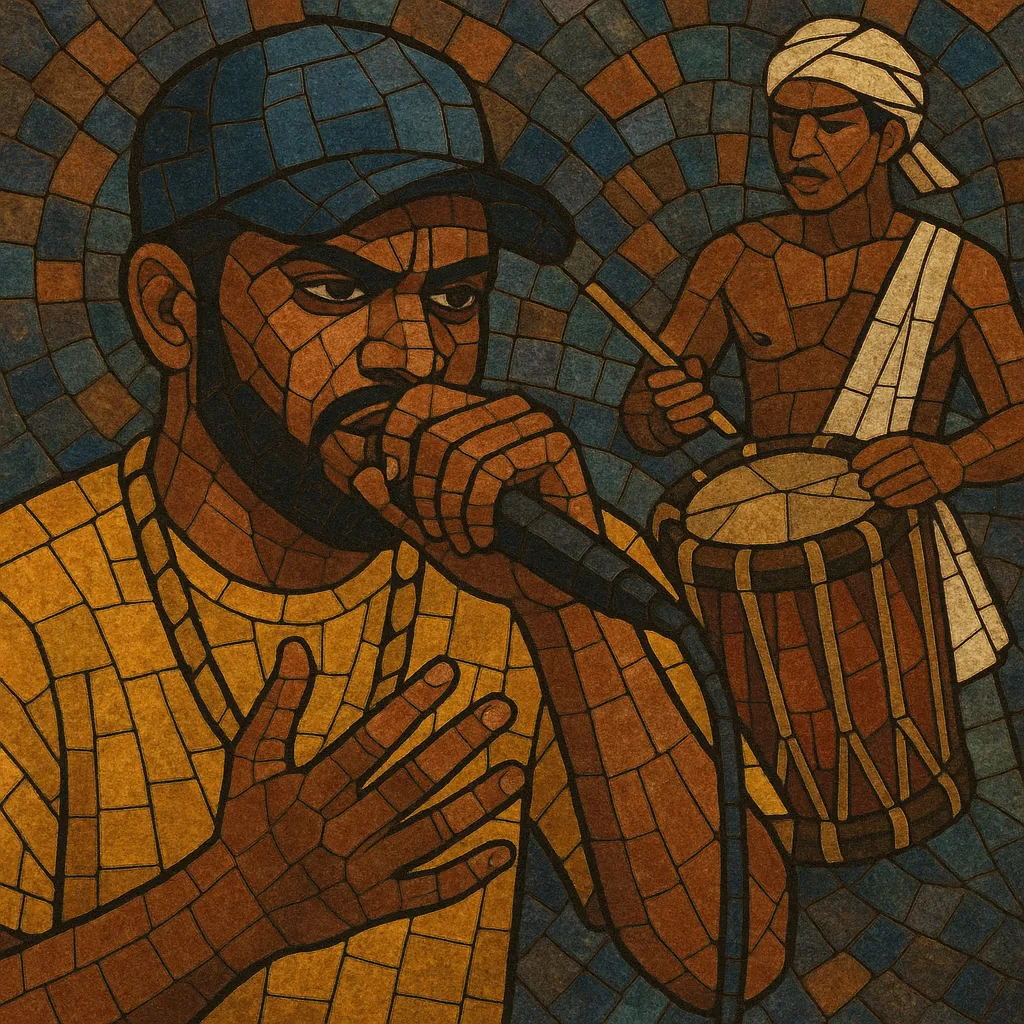Malayalam hip hop is the localized form of hip hop created by artists from Kerala, India, performed primarily in the Malayalam language.
It blends global rap aesthetics (boom‑bap, trap, and alternative hip hop) with Kerala’s rhythmic and melodic sensibilities, often sampling or referencing folk percussion (chenda, thavil), Mappila folk idioms, and Carnatic/Raga motifs.
Lyrically, it covers identity, migration (especially Gulf Malayali experiences), social commentary, political satire, and everyday urban life, frequently code‑switching between Malayalam and English.
The scene grew online through DIY production and YouTube releases, and later crossed into the mainstream via film soundtracks and brand collaborations, while maintaining a strong independent, crew‑driven culture.
Kerala’s first sustained rap experiments emerged in college circuits and small studios, inspired by pan‑Indian “desi hip hop” and global hip hop. MCs began writing in Malayalam to capture local cadence and humour. Early uploads and campus performances laid the groundwork for a grassroots scene.
The mid‑2010s saw a spike in Malayalam rap singles and cyphers released on YouTube, helping artists find audiences outside the film industry. Collectives and crews solidified an underground network, sharing producers, videographers, and live stages. Scene vocabulary—slang, regional dialects, and topical bars—became a hallmark.
Viral singles and high‑profile collaborations brought Malayalam hip hop to a wider audience. Rappers appeared on film soundtracks, television, and branded content, while independent releases continued to push stylistic range—boom‑bap throwbacks, trap‑leaning club tracks, and storytelling pieces rooted in Kerala’s street life and migration narratives.
By the 2020s, the scene encompassed battle rap, drill‑leaning cadences, conscious rap, and pop‑rap crossovers. Artists toured across India, collaborated with non‑Malayalam rappers, and refined a production language that fuses heavy 808s with Kerala percussion and folk timbres. Streaming platforms, short‑video apps, and festival slots further normalized Malayalam hip hop within India’s multilingual rap ecosystem.


